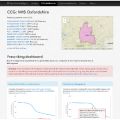
Image credit: StudioFI/ Shutterstock
Clinical workload for general practice in England rises 16% in seven years
People in England are visiting their GP practices more often, and are having longer consultations than they were in 2007, resulting in a 16% rise in clinical workload, researchers led by the University of Oxford found. Workload changes were over and above any extra demand from the 5.2% increase in population since 2007.
Writing in the Lancet, the researchers suggest there are signs that the overall primary care system in England may be reaching 'saturation point.'
The study, supported by the NIHR School for Primary Care Research, is the most comprehensive analysis of workload in primary care to date and involved an analysis of anonymised electronic health records from 100 million consultations with GPs and practice nurses in England. The data, obtained from 398 GP practices, was equivalent to 2.5 million patient years of observation recorded over seven years, between 2007 and 2014. The study found:
There is no longer any slack - GPs and nurses are now consulting throughout the booked clinic without a break and demand for those clinic slots is rising.
Professor Richard Hobbs, Nuffield Department of Primary Care Health Sciences
- Consistent increases in average consultation rates over the 7 years, rising 10.5% from 4.67 consultations per person per year in England in 2007/8 to 5.16 in 2013/14. The largest increase was in overall consultation rates for GPs, rising 13.6% over seven years.
- The highest consultation rates were in children and the elderly, and in women compared with men at all ages, the study found.
- The number of telephone consultations with GPs doubled (99.6% increase), though face-to-face surgery consultations, which rose 6.4%, still accounted for nearly 90% of all consultations. In 2013/14, the rate of increase in the number of face-to-face consultations per patient plateaued.
- There was a 5% rise (25 seconds) in the overall duration of consultations with GPs and practice nurses, with GP face-to-face consultations on average 6.7% longer (34 seconds) in 2013/14 than they were in 2007/8, increasing from 8.65 minutes to 9.22 minutes.
- For practice nurses, the rise in overall consultation rates was less marked than for GPs, increasing 0.9% over seven years, though the year-on-year increase levelled by 2009. The number of face-to-face consultations with nurses increased by 3%, and they were 6% longer by 2014, increasing to 9.72 minutes. Overall there was a 10% reduction in telephone consultations for practice nurses.
- In contrast to practice-based increases, the rate of home visits by GPs and practice nurses dropped by 8.5% and 46% respectively, over the 7 years.
These data only explore workload in direct patient contact, and do not account for indirect duties such as booking hospital referrals, or other activities often carried out by GPs such as teaching, audit or training.
Lead author Professor Richard Hobbs, Head of Oxford University’s Nuffield Department of Primary Care Health Sciences, Director of the NIHR School for Primary Research and a part time GP, commented:
'Most English practices offer patients 10 minute appointment slots, based on the expectation that some consultations will be shorter or patients won’t show up, so longer consultations can be accommodated within the booked clinic. Since the average face-to-face consultation is now approaching that 10 minute threshold, there is no longer any slack - GPs and nurses are now consulting throughout the booked clinic without a break and demand for those clinic slots is rising.
'The 16% rise in overall measurable direct clinical work for GPs and practice nurses is understandably pressuring, not to mention the time required outside of clinic to book hospital referrals and keep up with continuing professional development. It’s fair to say that the perceptions of rapidly rising workload in English primary care are well founded.
'For the first time, we also soon be able to provide data to enable individual practices or Clinical Commissioning Groups to estimate the numbers of GPs and nurses needed to deliver direct clinical care at the current levels of demand, based on the mix of people in the local area.'
Co-author Professor Chris Salisbury, a GP and head of the University of Bristol's Centre for Academic Primary Care, said: 'Because consultations are both happening more often and taking longer, the combined effect is that overall workload of doctors and nurses in general practice has increased by 16% over the seven years, while time spent by GPs with patients has increased by 18%. This increased workload for GPs is equivalent to almost an extra working day each week. These findings may explain why people are finding it increasingly difficult to get an appointment.'
The research paper, Clinical workload in UK primary care: a retrospective analysis of 100 million consultations in England, 2007–14, is published online in The Lancet on 6 April.
The paper presents independent research funded by the Department of Health Policy Research Programme and the National Institute for Health Research. The views expressed are those of the authors and not necessarily those of NHS England, the NIHR or the Department of Health.
 New analysis of archaeological data reveals how agriculture and governance have shaped wealth inequality
New analysis of archaeological data reveals how agriculture and governance have shaped wealth inequality
 Cambridge victorious in Women's and Men's Boat Races 2025
Cambridge victorious in Women's and Men's Boat Races 2025
 Expert Comment: Ethical and legal challenges of uterus transplants in Mexico
Expert Comment: Ethical and legal challenges of uterus transplants in Mexico
 Sunday GP appointments unlikely to meet patient needs
Sunday GP appointments unlikely to meet patient needs
 NHS GP prescribing data open for all
NHS GP prescribing data open for all